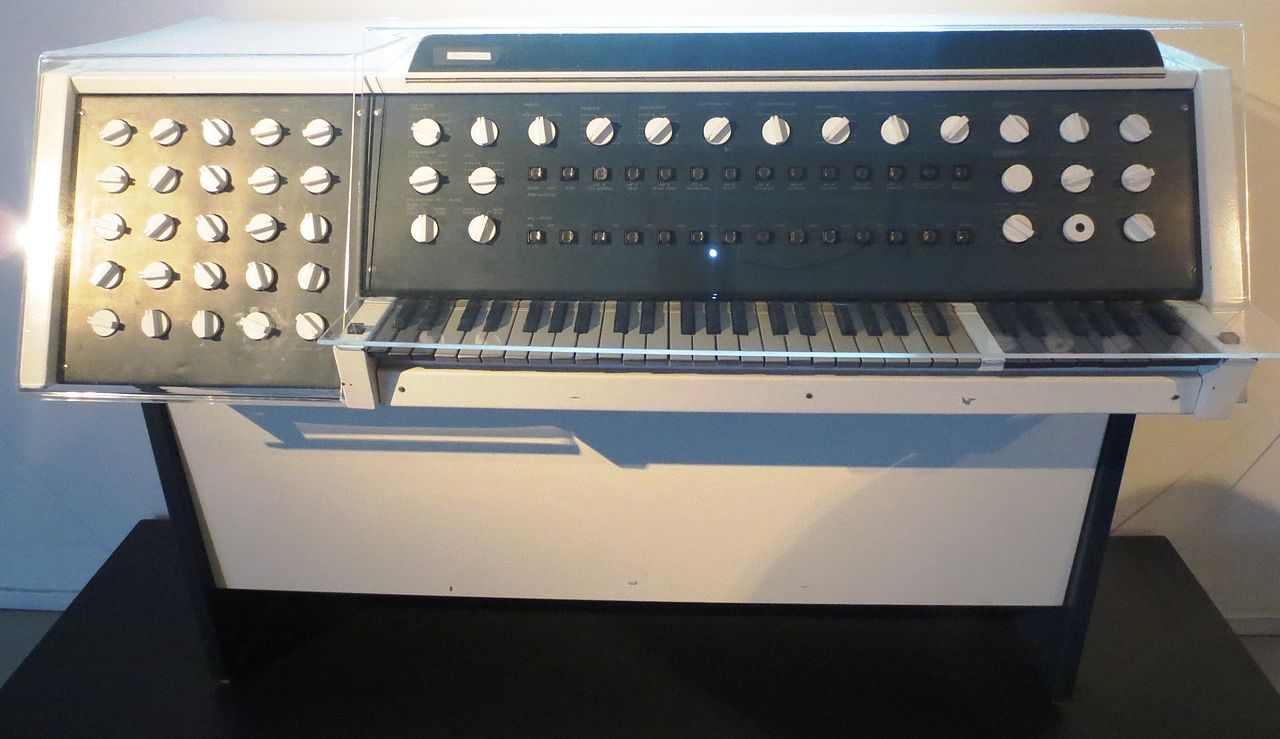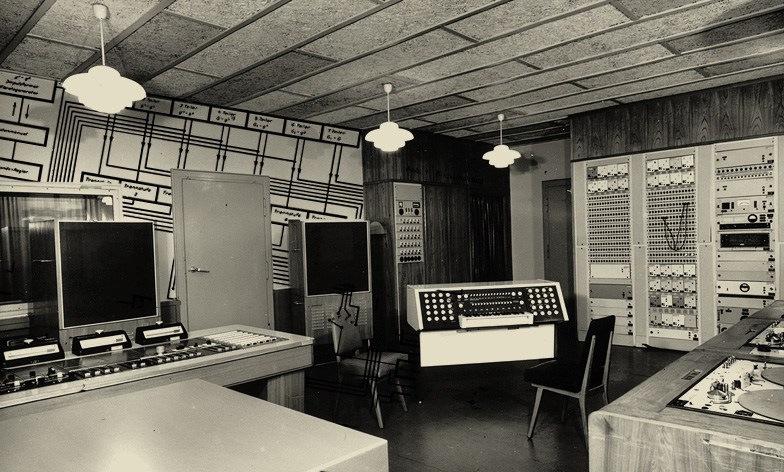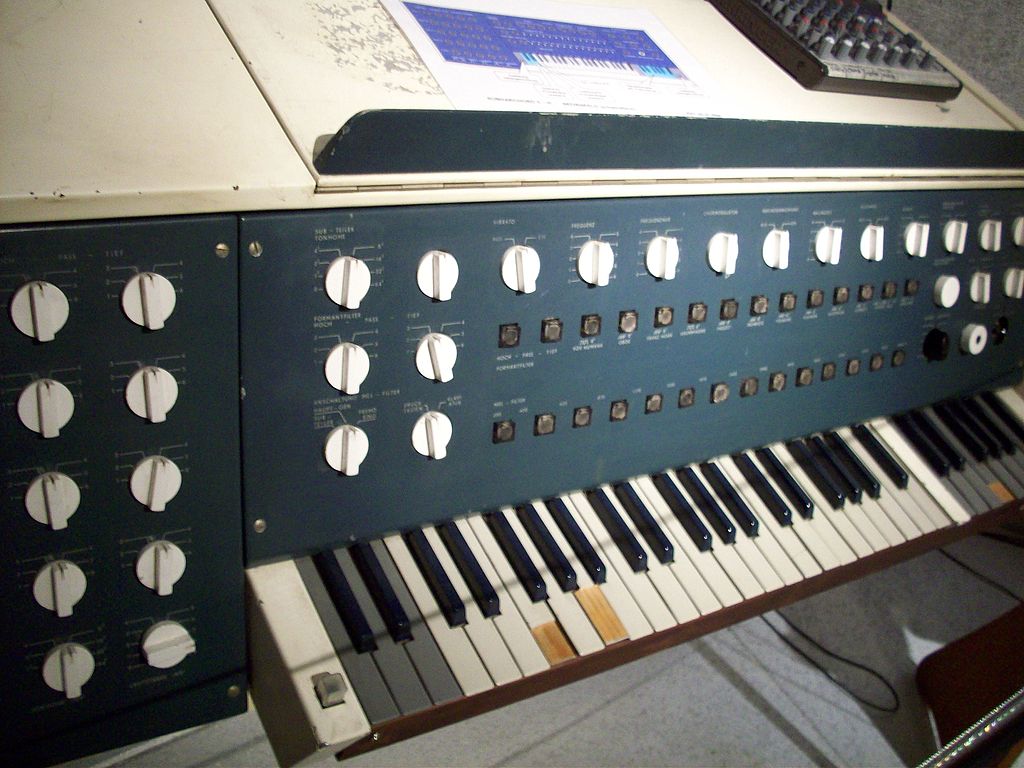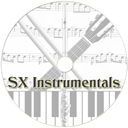Filter on ALL, SYNTH, DRUM, SAMPLER or MISC |
Total list currently 2405 items in 330 Brands |
Ernst Schreiber | Subharchord |
Description | In the late 1950’s the East German government decided that it needed to develop an ability to produce electronic music for film and TV for ‘Eastern block’ media as well as provide a platform ‘serious’ modern electronic music to compete with the likes of WDR Electronic Music Studio in west Germany. The result of this was the foundation of the first East European electronic music studio under the auspices of the East German National Radio (RFZ) in 1956 (and closed in 1970). The studio was called the “Labor für Akustisch-Musikalische Grenzprobleme” ( laboratory for problems at the border of acoustics/music ) , and in 1960 the ‘Subharchord’ was created as the centrepiece of the Laboratory. The laboratory was founded in East Berlin in 1956. Gerhard Steinke, a young sound engineer who became its director, was tasked with research and development into stereo-sound and electronic sound generation. Countries all of over Europe were running similar programmes at the time, many of which were visited by Steinke in the years before East Germans were subject to travel restrictions. In 1961, a team headed by Ernst Schreiber, who was latter credited as the inventor of the Subharchord, completed work on the instrument: The Subharchord’s history dates back to pre-WWII exploration of ‘subharmonic’ synthesis of Dr Freidrich Trautwein’s Trautonium and Oskar Sala’s Mixturtrautonium. These instruments uniquely used a technique of octave dividing sub-harmonic frequencies to modulate a synthesised tone creating a wide range of complex effects and sounds. Unlike the Trautonium family however, the Subharchord was less focussed on micro-tonal tuning and deployed a standard keyboard manual in stead of a sliding scale wire resistor. Like it’s western counterpart, The Trautonium, the Subharchord was used extensively in film soundtracks and TV production throughout the Eastern block during the sixties and seventies; Karl-Ernst Sasse, former conductor of the DEFA (East German Film Company) Symphony Orchestra, worked with the subharchord in Dresden on the soundtracks of cult science fiction classics, such as ‘Signale’ ( a popular eastern block ‘Star Trek’ series). The subharchord was also used for many of the DEFA’s cartoons. Other composition from the studio include Der faule Zauberer (Kurth, 1963); Amarillo Luna (Kubiczek, 1963); Quartet für elektronische Klänge (Wehding, 1963); Variationen (Hohensee, 1965); Zoologischer Garten (Rzewski, 1965) In Alfred Hitchcock's film The Birds, the rather menacing sounds of these usually harmless creatures were produced synthetically on an electronic instrument, a Mixturtrautonium — a further development of the Trautonium. The Mixtur-trautonium is a special case in the history of electronic music instruments, since it uses the afore mentioned subharmonic mixtures to generate sound. The sounds produced by conventional instruments and in the natural world are a combination of a fundamental with a series of harmonic overtones above it. Subharmonic sounds are produced by dividing the fundamental frequency, resulting in subharmonics, or "undertones". Subharmonics only exist naturally in bells and steel plates and differ from the sounds produced conventionally by synthesizers and software programmes for electronic music. It appeared that the world of sound produced by mixing subharmonics would be forever dominated by the only existing instrument, the Mixturtrautonium, and its constructor and player, Oskar Sala. Nobody else had ever mastered or played Sala’s instrument, and when he died, it seemed that the sound world of subharmonics was lost. In the course of extensive research on the history of electronic music instruments, in 2000 Manfred Miersch, a Berlin artist and musician, made a remarkable discovery: the Trautonium is not the only instrument of its kind; another exists that produces subharmonic sounds the "Subharchord". As described above, this instrument was invented in the GDR under difficult technical conditions, but using the latest technology available. However, the Subharchord differs from the Mixturtrautonium in key respects. The Subharchord has a keyboard and is played like an organ, whereas the Mixturtrautonium’s manual is a resistor wire over a metal plate, which is pressed at various points to create sound (like a ribbon-controller), a rather difficult procedure. In addition, the Subharchord possesses considerably more possibilities than the Mixturtrautonium for generating and manipulating sounds. Miersch succeeded in tracking down and unearthing long-forgotten instruments, thus saving the Subharchord from oblivion. With his publication of a four-part series in the German magazine Keyboards in 2003 and construction of a website (www.subharchord.com) in 2002/2003, Miersch introduced the Subharchord to a wider audience. As a result of Miersch’s activities, one of the surviving instruments has now been restored. Like its West German counterpart, the Trautonium, the East German Subharchord was a favourite choice for film soundtracks. Karl-Ernst Sasse, former conductor of the DEFA (East German Film Company) Symphony Orchestra, worked with the subharchord in Dresden on the soundtracks of science fiction classics, such as Signale. The subharchord was also used for many of the DEFA’s cartoons. |
| Brand | Ernst Schreiber |
| Model | Subharchord |
| Device | Synth |
| Type | Keys |
| Engine Type | Analog |
| Engine | VCO |
| Voices (max) | 1 |
| Oscillators | 1 |
| Engine Detailed | 1 VCO Saw |
| Filter (VCF) | 2 Formant, High Pass, Low Pass, Resonance |
| Keys | 44 |
| Key type | Keys |
| Velocity | N |
| Aftertouch | N |
| Produced: | 1961 - 1970 |
| Legend: | Obvious | Y: Yes, N: No, N/A: Not Applicable | |
| VCO | Voltage Controlled Oscillator | DCO | Digital Controlled Oscillator |
| LFO | Low Frequency Oscillator | Sub | Sub Oscillator |
| VCF | Voltage Controlled Filter | VCA | Voltage Controlled Amplifier |
| Velocity | As with a piano, the harder you hit a key, the louder the sound, unlike most organs which always produce the same loudness no matter how hard you hit a key. | Aftertouch | Pressing a key after you activated it. Channel Aftertouch, no matter which key, it will send a Channel message. Poly Aftertouch, sends the pressure per key instead of the whole channel. |
| Values for OSC, LFO, Filter, Envelope are per voice unless stated otherwise. | |||





